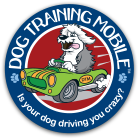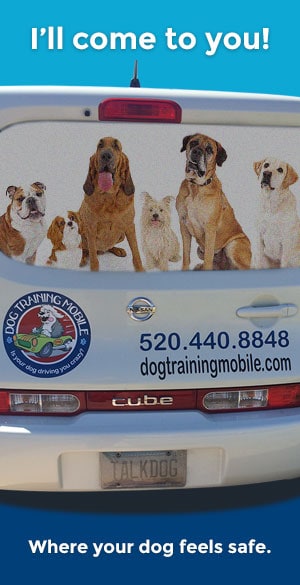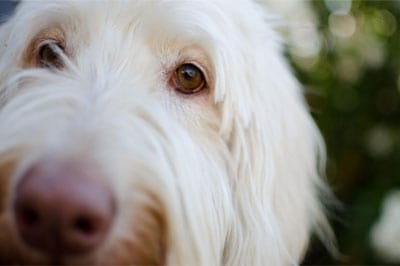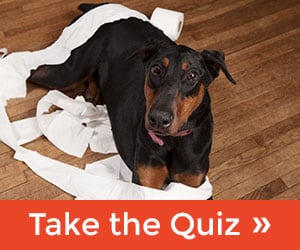Dog Training For The Holidays and Safety Reminders
- Gerard Raneri
- Dec, 05, 2018
- Behavioral Issues, Breeds, Resources, Safety, Training, Uncategorized
- Comments Off on Dog Training For The Holidays and Safety Reminders
Holiday Training and Safety Reminders
Greeting Holiday Visitors
Ding dong! Hi, folks, Happy Holi—barkbarkbarkbarkbarkbark!!
We all know that front door scene. Whether it’s the UPS guy, a neighbor dropping by, or a bevy of expected guests, many dogs go nuts when they hear the doorbell, a knock, or even footsteps outside. Dogs instinctively react to outdoor noises with great excitement and interest – “Who’s out there?” they want to know, “Is it friend or foe?”
Thus, December is when I get the most calls from frustrated dog owners who are expecting company over the holidays and want to get their dog to STOP ALL THAT BARKING!
Now, we know it’s natural for dogs to react to “an intruder” onto the pack’s territory; and sometimes we welcome an attentive house mate to sound the alarm. But in most circumstances, it is simply not necessary for a dog to overreact with annoying, unmanageable and even unsafe behaviors. After all, that’s why we have a doorbell – we don’t really need a “dogbell,” too!
Beyond the irritating din of loud, uncontrolled barking, an overexcited dog can present a danger as well: he may dash out the door and run into harm’s way; he may knock people over; he may get underfoot and be a trip hazard; or he may even become aggressive to the visitor.
I can recall several dog owners who have told me about a time (or two) their dog ran out the door while they were trying to greet guests. The party was ruined because the hosts had to spend hours looking for the dog rather than enjoying their company.
Unfortunately, calling on me to help control your dog one weeks before the holiday just isn’t enough time to make a noticeable difference, in most cases. Training to change your dog’s manners needs to begin months in advance.
Therefore, for the meantime I recommend that people learn how to manage the behavior. Don’t misunderstand–I certainly don’t want to discourage anyone from getting started with training; but I also want to remind you to not expect any “Christmas miracles” to happen overnight.
So, what do I mean by managing the dog? It all begins a few hours before your party or gathering.
First, tire your dog with a brisk ½-hour walk or game of fetch before your guests’ arrival time. Keep him active and busy by accompanying you around the house as you clean and tidy.
Then just before guests arrive, or even when they are at the door, you can take one of these actions:
- Direct your dog to his crate (if he’s crate trained) and provide a treat-dispensing toy such as a Kong or a bone with a bit of peanut butter rubbed inside.
- Lead your dog to a nearby room, secure a gate across the doorway, and then provide a treat toy that is interactive and lasts.
- Restrain your dog on a 6-foot leash and keep hold of it so you can better control his actions.
Later, consider allowing your dog to join the party once he/she has settled down and your guests are all relaxed as well. Again, keep him on a leash to ensure safe and calm introductions. Remember, you’re the leader of the pack, If you stay calm it helps to keep your dog(s) calm.
If your dog is simply too difficult (or dangerous) to control with guests, it may be best to remove him from the scene altogether. Place him in his crate (if crate trained) in a quiet room with a few favorite toys.
Even if your dog is well behaved with visitors, consider giving him some quiet time away from the festivities. A good time might be just before sitting down to the holiday meal; this way, you can focus on your guests without worrying if the dog is begging from under the table. Allow him to rejoin the festivities later.
After your company leaves, it’s time to start a training program so that you and your dog are ready for the next time company comes calling.
One way you can teach your dog to better manage the front door scene is by desensitizing him to the doorbell through “classical conditioning.” An even better method is to teach your dog to sit and stay on command. Then, at the sound of the doorbell, you direct him to sit in a designated place near the door, where he will stay until you release him.
Sound impossible? It’s not! Training your dog to control himself when guests come to your house ensures a more peaceful and safe experience for everyone.
People Food
If that Christmas lasagna and sugar cookie smell good to you, try to imagine how they smell to your dog: dogs can smell every single ingredient, down to the last oregano leaf and drop of vanilla. Add this array of delicious aromas to the distraction of having extra people in the house, and your dog has an opportunity to “counter surf” and snitch some food—truly a recipe for trouble.
So, remember these tips surrounding holiday foods:
- Many holiday foods are harmful or even toxic to our pet dogs. Particularly dangerous are cooked poultry bones; chocolate and other sweets; and bread dough. I had one client who fed their dog a bone they brought home from a restaurant. Sadly, the dog died after trying to eat the bone overnight. Click here for a complete list of foods to avoid feeding your dog at any time of year.
- Artificial sweeteners like Xylitol (found in chewing gum) are toxic to dogs. Some dogs love peppermint, so remind holiday guests to keep handbags and coats (where they might keep a pack of gum) out of the dog’s reach.
- Remind guests to refrain from feeding your dog table scraps. Instead, bring out the doggie treat jar so guests can indulge your pet safely.
Christmas Trees and Decorations
- Hang tree ornaments strategically: place non-breakable ones near the bottom, and those shaped like tempting toys (e.g., balls) toward the top.
- Avoid using tinsel on your tree. I had a client whose dog required emergency surgery to remove tinsel that had twisted in his intestines. Thank goodness the dog survived—but the surgery was very expensive.
- Anchor your tree securely to the ceiling or a wall so it won’t tip over.
- Some dogs are confused by having a tree in the living room, and thus are tempted to mark around it (“I thought trees belonged outside!’ says the dog). You can lay bubble wrap or sheets of aluminum foil around the base of the tree to deter him from getting near it.
- Don’t let your dog drink the Christmas tree water. Water treated with preservative chemicals can trigger severe indigestion in dogs, and untreated water can get stagnant with bacteria, thus causing nausea or diarrhea to a dog that drinks it.
- Many holiday plants are poisonous, including poinsettias, holly and mistletoe. Place plants out of your dog’s reach, and quickly pick up any dropped leaves or berries.
- Never leave a lighted candle unattended, as a dog’s swinging tail can knock it over.
Don’t Give a Dog as a Surprise Gift
I can’t say it enough—never give a dog (or any live animal) as a gift on Christmas morning. Sadly, many such “holiday presents” wind up at animal shelters or on the streets just a few months later. Owning a dog (and especially a young puppy) takes a genuine commitment of time, responsibility and expense.
If someone you know is serious about getting a dog, consider giving a certificate from The Dog Training Mobile for the recipient to use when the family is ready to bring the right dog into the household.
Happy Howl-idays!
While I realize that some of the information in this post may sound sad or daunting, understand that my intent is to remind you to pay attention to your dog during the especially busy and active holiday season. Remember, our dogs count on us to keep them safe in our human world any season of the year.
Dog Training Mobile –
Gerard Raneri – Family Dog Trainer/Behavior Modification – 520-440-8848
Leadership without Force – We come to you – Tucson’s Mobile Family Dog Trainer






